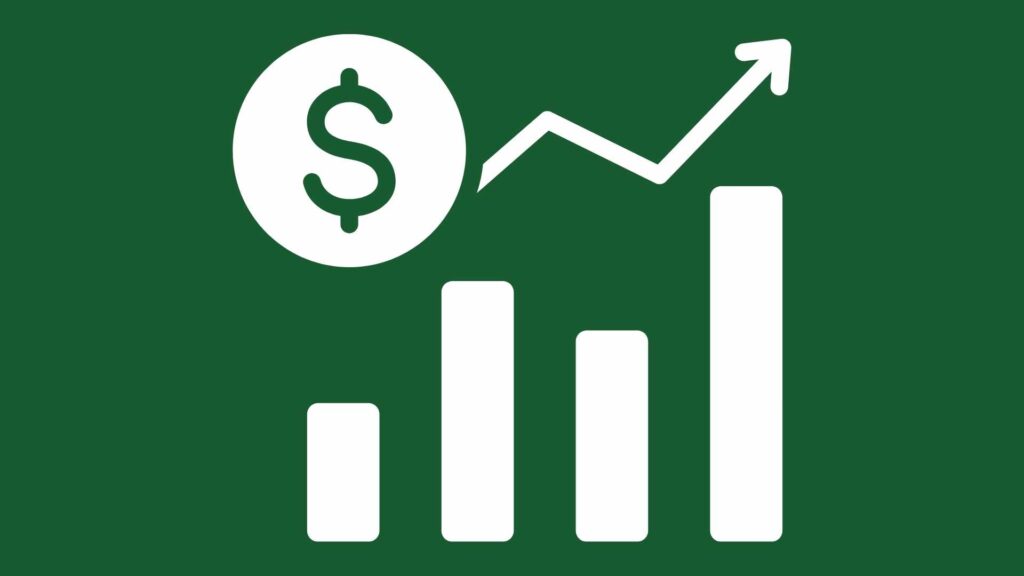No matter what business you’re in, it’s important to have a strong revenue model. This will ensure that your business is bringing in money and keeping the lights on. There are a variety of revenue models out there, so it’s important to pick the one that best suits your business. Here are some tips to help you choose the perfect revenue model for your business.
What Is a Revenue Model?
A revenue model is a plan that outlines how a business will generate income from its regular business activities. Think of revenue models as a kind of “master plan” for earning your money.
Because it’s so important, your revenue model is at the core of your operations. The difference between revenue and the variable costs of production like wages and raw materials— is known as your operating margin. From the operating margin, other costs (such as rent, bonus, interest, etc.) are covered. A higher operating margin means that the company has more money left over to invest in new products or services, grow its business, and be viewed as less of a financial risk to creditors and investors. Simply put, how you manage your revenue is just as important as making it.
Revenue Models vs. Revenue Streams
Revenue models are also easily confused with revenue streams. A revenue stream is a particular method for earning income. However, your revenue model is the plan for managing those revenue streams.
Let’s say you have a popsicle stand. In addition to selling popsicles, you also dog-sit at your stand. These are both revenue streams, and you will use a transactional revenue model so that your customers pay in exchange for what they want.
Revenue Models vs. Business Models
While a revenue model is a way a company generates revenue, a business model details the structure of a business and how it operates.
There are two main types of business models: product-based and service-based.
Revenue Modeling for Service-Based Businesses
A service-based business is a business that provides a service to the customer. Service-based business examples include hairstyling, accounting, and personal training.
Service-based businesses are often more scalable and less expensive to start because they require less initial capital than product-based businesses.
Service-Based Business? Consider a Subscription Revenue Model
The constant challenge for a service-based business is how to retain customers. If you have a unique product or service, you may want to consider a subscription-based model, where customers pay a recurring fee to access your product or service.
With a subscription-based model, you’ll need to determine how much to charge, how you’ll deliver the service (e.g., online, through a mobile app), and what features or benefits your customers will receive.
Meal-kit companies are one of the best examples of the subscription revenue model. They provide ingredients and recipes that customers use to make food in their kitchens. The subscriber can customize their meal plan settings based on dietary preference and desired number of meals.
Subscription-based revenue models are becoming increasingly popular because they’re simple to set up and manage. You don’t need a lot of technical expertise to run a subscription-based business, which makes it easier for first-time entrepreneurs to get started.
Revenue Modeling for Product-Based Businesses
A product-based business model is a business model where the company’s revenue is generated from the sale of products. Industries such as retail and manufacturing are made up of product-based businesses.
The product-based business model has many advantages. For example, it allows for more control over pricing and production costs, making it easier to differentiate from your competitors. However, these businesses require a lot of capital to start up and maintain, making scaling (or growing) your business challenging.
It can also be very difficult to scale a product-based business model.
Let’s look at another example. Ann is a nurse that wants to make a little extra cash and starts selling homemade cheesecakes out of her kitchen. Her recipe is flawless, so word spreads quickly. In just two months of her side hustle, she doubles her orders. If her cheesecake popularity continues to rise, Ann will need to reinvest her earnings or find funding for an industrial kitchen space, more cookware, and possibly some employees.
Licensing-Based Revenue Model
The licensing-based revenue model is a business model in which a company allows customers access to its products or services for a one-time or recurring fee.
Let’s take another look at Ann’s booming cheesecake business. Although it’s a success, Ann may not want to leave her nursing career and sink money into a large-scale business venture. So instead of selling her cheesecakes directly, she licenses her recipe to a bakery and receives a percentage of every sale. Though she may not earn all the revenue from her cheesecakes, this deal allows Ann to make money without direct, daily effort.
How Do I Choose a Revenue Model?
Applying the right revenue model can turn the value your business brings to a customer group into income. In addition to the models we discussed here, other revenue models include providing tailored marketing and advertising campaigns. Whichever option we choose, it is important to carefully consider the potential benefits and drawbacks of each approach to ensure that you are maximizing the value you provide.
When you’re thinking about what revenue models to explore for your business, consider these factors:
Your Value
To choose the right revenue model, you need to think about what your product or service is and what people are willing to pay for it. Create a value proposition— a statement that explains what your product is and what people can get from it. It can be a phenomenal resource in determining what and how to charge customers. For example, you may have a product that can be offered at different levels for different prices or offer a per-user arrangement at a fixed amount.
Your Customers
The lifeblood of your business is your customers. Knowing who they are, what they need, and how you can serve them is essential to generating revenue. For example, a single customer may benefit from a subscription model, but a larger company may need to license your product.
Your Competition
How does your competition in the financial market generate revenue? By studying the market strategies and revenue models of similar businesses, you can determine if other approaches are more successful than yours and make necessary changes to stay ahead. You may be able to find a way to innovate on a model that is already working. For example, Ann could consider a subscription model for customers that want a fresh cheesecake every month. Even when her business is compared to a giant like Sara Lee or Entemann’s, she provides a service they don’t.
Final Thoughts on Revenue Modeling
There is no one-size-fits-all answer when it comes to choosing revenue models. To pick the right one, every business must first clearly define its goals and have a strong understanding of what its customers want. On the other hand, there are no perfect revenue models. Many businesses experiment with different models until they find the one that works best. Knowing the ins and outs of other revenue models can help you adapt or pivot when you need to.
Revenue modeling is an important step in planning and forecasting your business. It allows you to understand your business’s performance and make informed decisions about how to grow and improve your business. By understanding your business’s performance, you’re also better equipped to identify potential problems and address them before they become larger problems.
When you know your business inside and out, every choice can be simple. As a management accounting firm, Simplicity helps clients become experts on the financial impact of every decision and how to use data to make the right ones. Find out more at simplicityaccounting.co

